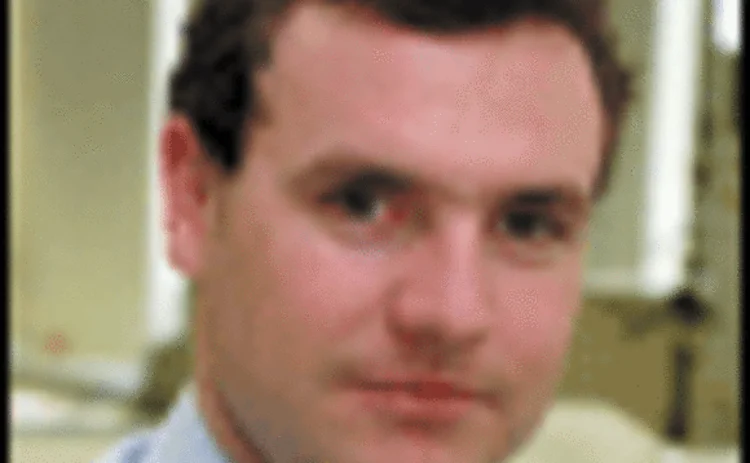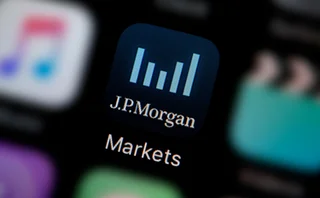
A storm over CMT
Structured bonds appealed strongly to South Korean investors at the start of the year, but as the country’s swap curve came under increasing pressure, a number of banks found themselves with steep hedging losses. Mia Trinephi reports

In South Korea, bankers sometimes have to become ‘novice sorcerers’ to satisfy client appetite for higher returns, sighs one senior banker. Nonetheless, it seemed constant maturity Treasury (CMT) and constant maturity swap-linked (CMS) notes offered all the right elements to appeal to South Korean investors at the start of the year. With South Korean forward curves implying steep rate increases, banks were able to structure CMT-linked products incorporating a less aggressive outlook on interest rates, and in doing so offer the country’s investors a tempting yield pick-up. In fact, market participants reckon that around $2 billion–2.5 billion in these structured notes were issued in the early part of the year.
But as more and more banks streamed into the market, all taking the same position in the swaps market and forcing the swaps curve downward, a number of deals began to turn sour, leaving some financial institutions with sizeable losses and investors with much lower returns. Consequently, the market for structured notes has ground to a halt, and a number of banks and investors are licking their wounds. And for the time being, South Korea’s interest rate swaps market will continue to stay within a range, as ongoing hedging activity continues to pressure the swaps curve, bankers say.
At the beginning of this year, the South Korean yield curve was relatively steep between one and five years and flat in the longer end, reflecting the view shared across the globe that interest rates could start rising by the third quarter of the year. As a result, structured notes incorporating CMS and CMT structures began to emerge to cater for South Korean investors keen to express a view on the shape of the yield curve and future interest rate levels.
A common structure involved linking the coupon to the spread between the long end of the curve – the three or five-year CMT or CMS rate – and short-term rates – the three-month certificates of deposit (CD) rate. In the early part of the year, the three-month CD rate was anchored at low levels, while the forward three-month CD rate was implying a steep rise out to five years. The longer end of the curve beyond five years was relatively flat. Therefore, the spread between the three-month CD rate and three- or five-year CMT or CMS rate was relatively wide in the first quarter of the year. If investors had a view that the shape of the curve would not change appreciably – in other words, the rate hikes implied by the forward three-month CD curve would not materialise, while longer-term rates would stay at comparable levels or would actually rise – they would continue to receive an enhanced coupon.
At the time activity peaked at the end of the first quarter of the year, “the curve structure was relatively steep and there was relatively high expectation of an interest rate hike in line with a global monetary policy which was turning to tightening,” says Connie Yun, vice-president, rates market, at JP Morgan Chase in Seoul.
A typical CMT-linked bond paid a dual rate coupon with a payout of:
[(3- or 5-year CMT or CMS – 3-month CD) × leverage] + fixed rate
The fixed-rate component of the coupon is calculated to reflect the shape and volatility of the curve, including a convexity adjustment, and is fixed for the life of each bond. The higher the volatility, the lower the fixed rate offered on the coupon. To hedge its CMT/CMS-linked coupon, the issuer typically entered into a swap with a bank, whereby the issuer received the CMT-linked coupon and paid the swap bank the three-month CD plus a spread.
In turn, the swap bank should have hedged its position by transacting offsetting trades. Because there is no secondary market for CMT or CMS in South Korea, the swap bank instead needed to hedge through the government bond market and by using options in order to manage its position.
But the absence of a liquid options market, the lack of liquidity in the longer end of South Korea’s government bond curve, and the difficulty in shorting bonds in South Korea meant that many banks hedged their CMS and CMT exposures through the swaps market, without achieving a perfect hedge.
“Since it’s very difficult to short bonds [in South Korea], some banks hedged via the interest rate swaps market, thereby assuming another risk – how far the Treasury yield moved against how far the swaps curve moved,” says Nick O’Kane, business head of derivatives at Kookmin Bank in Seoul.
As more of these notes were structured, the banks accumulated the same position on their books – that is, receiving fixed in the interest rate swap market to hedge the Treasury-linked payments. Swap banks “got exposed to the same risk over and over again. [They] ended up being at the receiving end of always a similar structure, with similar risks,” explains one senior Hong Kong banker, who asked not to be named
This, in turn, put pressure on swaps spreads. Banks had assumed that the swap curve would not fall through the Treasury curve – an apparently safe assumption given that the swaps curve represents AA-rated corporate risk. With government bonds considered risk-free, swaps would in normal circumstances trade above the government curve, therefore ensuring that the rate banks receive from the swap market would remain higher than the rate they had to pay for the Treasury-linked coupon to the issuer.
As interest rates began to fall and yield curves flattened – reflecting the prolonged slowdown in the US economy in the second and third quarters – more and more banks entered the swaps market to hedge. Because the whole market was one-way, swap rates were pushed down while Treasury rates remained stable. As a result of the large volumes of CMT and CMS transactions, combined with other structured deals that were transacted at the same time, South Korea’s swaps curve fell below the government yield curve.
On June 26, the three-year government yield traded at 5.52% while the three-year interest rate swaps rate had fallen to 5.35%. “So it’s a bit of a hot potato situation where every bank is holding the hot potato and is holding their breath, because if one starts to unhedge or hedge its position, it is going to make the market move in the same direction,” says the head of derivatives at one European bank in Hong Kong. “Everyone is sitting on the same position,” creating a lopsided swap market, agrees another derivatives banker in Hong Kong.
By mid-August, the swap spread had come back to zero, with both government and swap rates trading at around 5.21%. But as swap rates rose above government rates, some banks tried to get out of their positions, pressuring swap rates back down below government rates.
On November 6, the three-year interest rate swaps rate was trading at 5.20%, 13 basis points below the three-year Korean Treasury bond (KTB) rate, and the five-year swaps rate was at 5.43%, 22bp below the five-year KTB rate. And bankers reckon that swap rates are likely to stay within a range for the immediate future, rising above and falling below government Treasury rates until the market has digested the amount of structured transactions issued earlier in the year. Total losses on swap positions stemming from the CMT and CMS trades are estimated to be around $100 million, as the falling swap rates meant banks were unable to match the Treasury-linked coupons they had to pay to structured note issuers. One senior trader in Hong Kong reckons that three out of four swap banks incurred losses in South Korea as a result of those swap positions. But another Hong Kong-based derivatives head points out that the losses incurred on those swap positions have largely been mitigated by profits elsewhere in the market. All the investment banks questioned for this article declined to comment on their positions. But Citibank, for instance, denied making any losses in South Korea: “It’s been a good year in Korea for us,” notes a spokesperson for the bank.
Privately, however, some banks admit there was a problem. “The banking system has learned a lesson,” concludes one Hong Kong-based senior trader. He reckons that banks “will try to create structures on the opposite side and shift some of their risks on other counterparties, acting as financial intermediaries, and avoid a situation where banks have to warehouse large positions”.
A Singapore-based senior derivatives banker agrees: “The key to a successful derivatives business is not to rely entirely on the interbank market, but the ability to do trades that aren’t directly hedgeable in the interbank market and the ability to find other customer trades and transactions to offload that risk.”
But banks aren’t the only ones to have suffered. The fact that rates continued to fall and the yield curve flattened meant that investors received dwindling returns on their CMT/CMS-linked coupons. On February 15, the three-year CMT was at 5.99% and the three-month CD was trading at 4.53%, offering a 146bp spread. On August 19, the spread between the two rates had fallen to 49bp. Worse still, the coupon on many of the structures was not floored at zero, meaning that the coupon could become negative if the yield curve became inverted. If the deal included leverage, any negative coupon would increase exponentially. Leverage, which was included in many, but not all, deals, originally “gave a higher initial coupon and doubled the curve expectation view for investors”, says Yun at JP Morgan Chase. However, while the leverage boosts the potential return, the converse is also true – any losses would be increased exponentially.
While the CMT rate didn’t fall below the CD rate, the flattening of the yield curve means that investors are receiving sharply lower coupons. Within the six months between February and August, investors have lost about 100bp on their coupon payments.
In terms of opportunity cost, the CMT-linked notes proved to be an unprofitable choice. Investors who would have bought fixed-rate corporate bonds instead of the structured bonds would have fared significantly better, as three-year corporate bond yields dropped to 6.15% in mid-August from 6.96% in mid-February.
South Korea’s investment trust companies were the biggest buyers of those structured bonds, followed by banks and life insurers. Market participants estimate that investors have already incurred combined mark-to-market losses worth about $100 million. “The pricing favoured issuers rather than investors,” points out one senior banker in Seoul who asked not to be named, noting that issuers could obtain a reduction in their funding costs of between 20bp and 100bp. Issuers could get away with it because there was a lot more demand to buy floating-rate debt than there was issuance, the banker adds.
Nevertheless, some market participants are confident the type of product will come back to the market, in a different form. Going forward, issuers could offer some optionality embedded in the CMT-linked products, such as a zero floor that would not allow the coupon to go negative. Indeed, now that the interest rate cycle may be turning, one fixed-income sales official in Seoul says that some clients have already expressed interest in buying more structured notes.
Only users who have a paid subscription or are part of a corporate subscription are able to print or copy content.
To access these options, along with all other subscription benefits, please contact info@risk.net or view our subscription options here: http://subscriptions.risk.net/subscribe
You are currently unable to print this content. Please contact info@risk.net to find out more.
You are currently unable to copy this content. Please contact info@risk.net to find out more.
Copyright Infopro Digital Limited. All rights reserved.
You may share this content using our article tools. Printing this content is for the sole use of the Authorised User (named subscriber), as outlined in our terms and conditions - https://www.infopro-insight.com/terms-conditions/insight-subscriptions/
If you would like to purchase additional rights please email info@risk.net
Copyright Infopro Digital Limited. All rights reserved.
You may share this content using our article tools. Copying this content is for the sole use of the Authorised User (named subscriber), as outlined in our terms and conditions - https://www.infopro-insight.com/terms-conditions/insight-subscriptions/
If you would like to purchase additional rights please email info@risk.net
More on Markets
Buy side would welcome more guidance on managing margin calls
FSB report calls for regulators to review existing standards for non-bank liquidity management
Citi halves swaptions book with US retail funds
Counterparty Radar: Mutual funds and ETFs cut exposures by 22% in Q4
Who’s winning the €STR futures race? Depends how you measure
CME, Eurex and Ice all claim to be leading, but experts say it’s too early to pick a winner
CDS review seeks to tackle conflicts ‘elephant’
Isda AGM: Linklaters proposes overhaul for determinations committee - including independent members
Saudi Arabia poised to become clean netting jurisdiction
Isda AGM: Netting regulation awaiting final approvals from regulators
Buy side looks to fill talent gap in yen rates trading
Isda AGM: Japan rate rises spark demand for traders; dealers say inexperience could trigger volatility
JP Morgan’s new way to trade FX overlays
Hybrid execution method allows clients to put dealers in competition via a single trading agreement
Pension funds eye 30-year Bunds as swap spread tightens
Long-dated bonds continue to cheapen versus euro swaps, and some think they might fall further
Most read
- Top 10 operational risks for 2024
- Top 10 op risks: third parties stoke cyber risk
- Japanese megabanks shun internal models as FRTB bites







